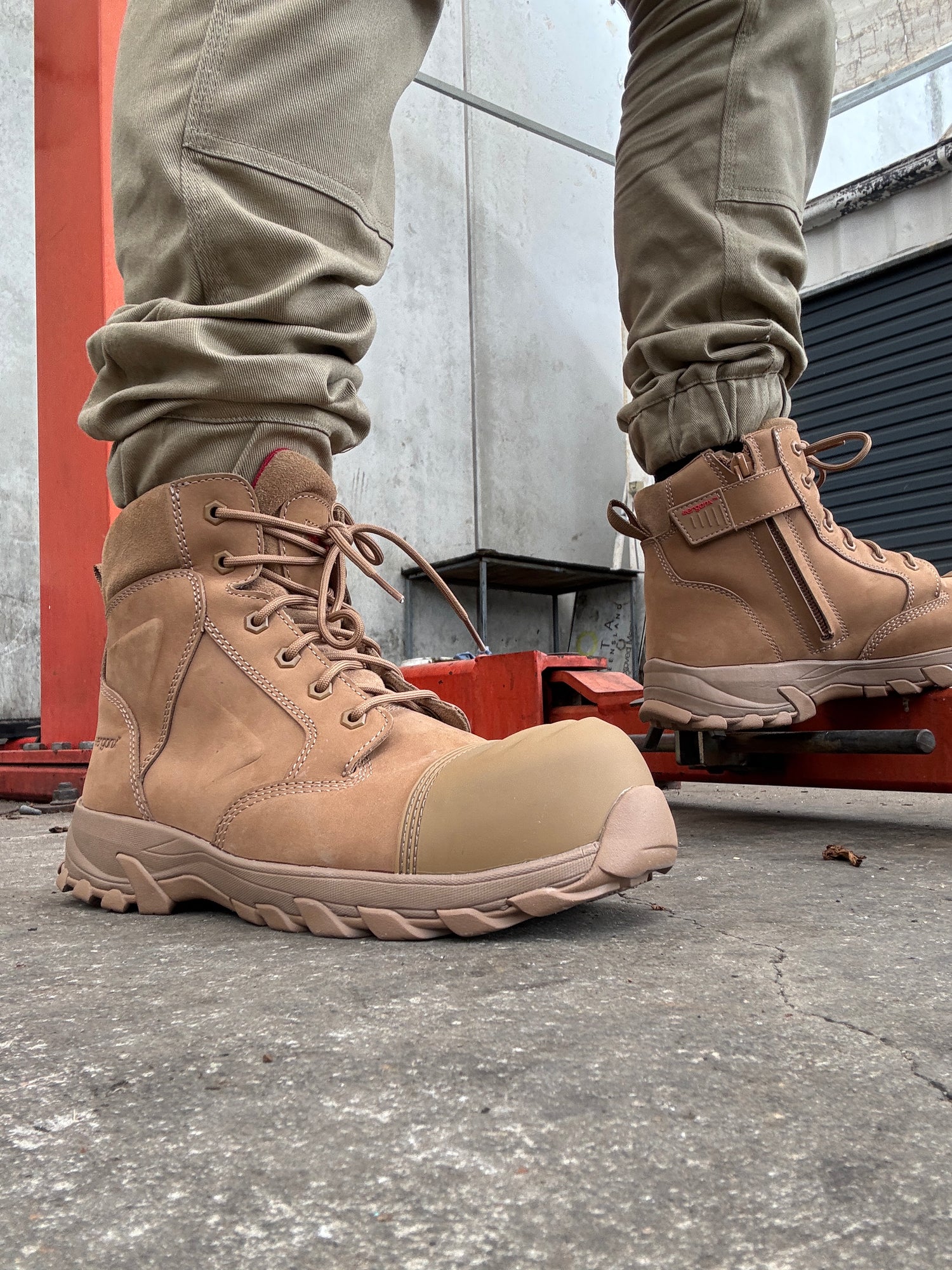Spending long hours on your feet at the work site or job site can take a serious toll on your body. Choosing the best work boots for standing all day (what to look for) comes down to one thing: support. Whether you're working construction, in a warehouse, or on the factory floor, your work boots should reduce strain, support your arches, and cushion every step.
Here’s what to look for so your boots work as hard as you do.
1. Prioritize Arch Support for Proper Alignment
If your work boots don't have proper arch support, your feet may collapse inward throughout the day — leading to foot pain, plantar fasciitis, and long-term foot fatigue.
Great boots feature:
- A high, supportive arch support insole that extends through the midfoot
- Firm structure for proper alignment
- A balance of cushioning and control for comfortable feet
Arch support helps prevent overuse injuries by limiting how much your foot rolls inward on hard surfaces.
2. Look at the Toe Protection: Safety Toe Types
Depending on your work environment, you'll need to choose the right toe cap:
- Steel toe or steel toe cap: Classic protection from falling objects, heavy tools, and machinery
- Composite toe or composite safety toe: A lightweight alternative made from non-metallic materials like carbon fiber
- Alloy safety toes: Lighter than steel safety toes but still incredibly tough
- Soft toe: Best for non-hazardous workspaces where protection isn't needed
If you’re standing all day and want lighter footwear, go with a lightweight composite safety toe to reduce fatigue.
3. Choose a Shock-Absorbing, Supportive Midsole
The midsole is where most of the comfort magic happens. It should provide:
- Superior shock absorption
- A soft but durable polyurethane midsole
- A shock absorbing midsole that won’t flatten after a few weeks
Avoid midsoles that are too soft — they feel good initially but break down quickly. Instead, find a balance that reduces stress on the heel counter, toe box, and arch support zone.
4. Wedge Soles vs Heel: What’s Best for Long Shifts?
Standing on hard surfaces for long shifts? Many tradies prefer wedge soles or a wedge outsole design. These provide a flat, broad contact area with excellent slip resistance, making them some of the most comfortable work boots available.
Look for boots with:
- A slip resistant sole
- Durable wedge outsole
- Stable heel counter for ankle positioning
Wedge-style safety boots are perfect for smoother surfaces where slip resistant contact and comfort matter more than grip on uneven terrain.
5. Full-Grain Leather Upper for Durability
A full grain leather upper offers breathability, toughness, and comfort all day long. These materials mold to your foot shape over time and help keep your feet dry in tough conditions.
Pair it with a:
- Leather lining or moisture wicking mesh lining
- Reinforced bump cap
- Water-resistant or waterproof boots finish
This ensures your pair of work boots stays comfortable through dirt, water, and sweat.
6. Traction and Outsole Design Matter
The outsole of your boots makes a big difference for safety and performance. Look for:
- Durable TPU outsole or tough TPU outsole
- Goodyear welt construction for long-term durability
- Slip resistant outsole with excellent grip
This improves slip resistance and helps avoid slips, trips, or fatigue at the end of your shift.
7. Don't Skip Break-In Time and Fit
Even the most comfortable work boots need a proper break in period. To get the most from your new boots, allow:
- 1–2 weeks for softening and molding to your foot shape
- Enough space in the toe box to wiggle your toes
- Snug heel fit for strong ankle support and minimal rubbing
If your break in time takes longer or causes pain, you may need a different size or brand built for wide feet.
8. Features That Boost Comfort for Long Days
What makes a comfortable work boot for standing all day?
- Padded collar for ankle and Achilles comfort
- Reinforced heel counter to stabilize the foot
- Roomy toe box to reduce pressure
- Work shoe profile for mobility
- Athletic shoes feel in a durable boot structure
A comfortable work boot helps reduce fatigue, ease pressure points, and make every hour easier — especially during long hours on concrete.
Summary: Choose the Right Pair for the Job

Whether you prefer a steel toe, composite safety toe, or soft toe, the right pair of work boots should support your foot from heel to toe. From the arch support to the wedge outsole, each detail adds to your performance and comfort across long shifts on the job site.
If you're dealing with foot pain or discomfort, remember this: learning how to prevent sore feet at work starts with your boots.
Ready to try a pair of boots built for comfort, support, and safety?
Explore our safety work boots at ergonx.com.au — engineered for tradies who spend long hours on their feet and want fewer aches at the end of the day.


